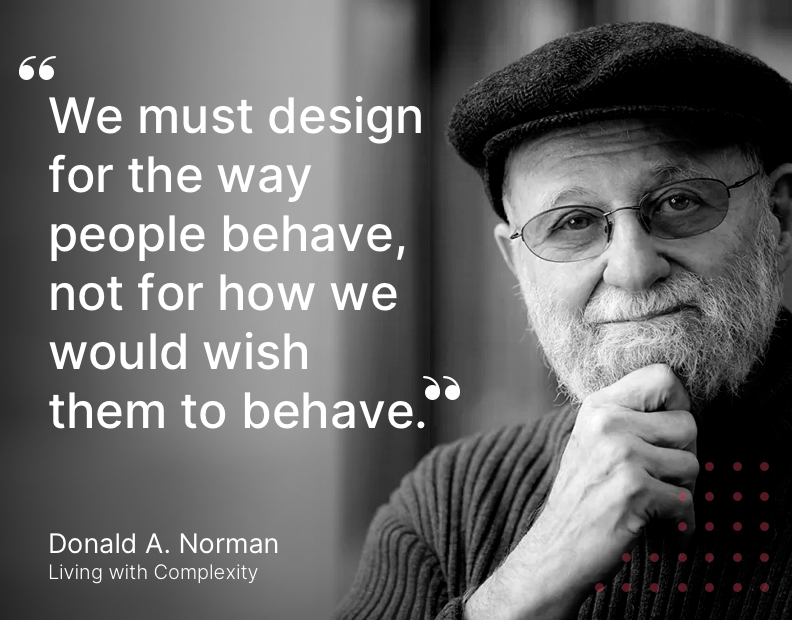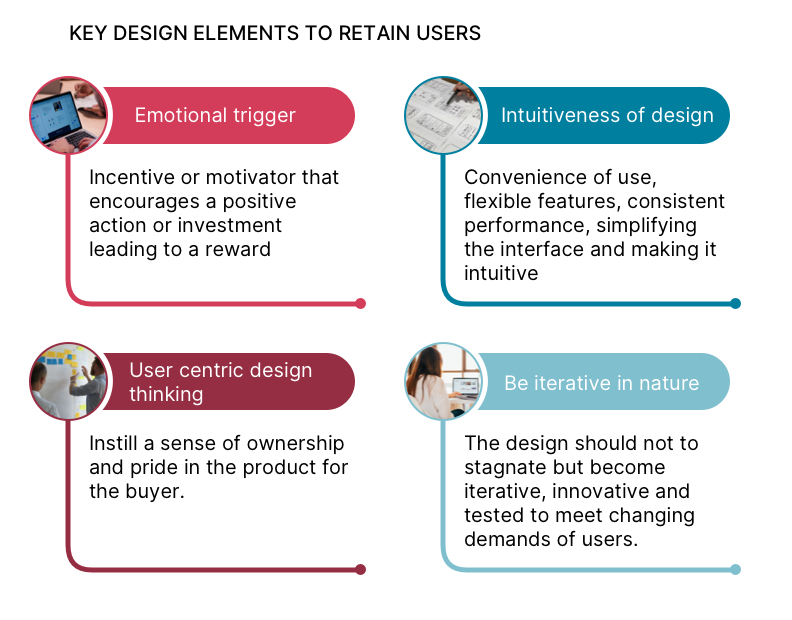Consumers have an abundance of choices today, so brands might rightfully rejoice when acquiring users. However, user acquisition does not guarantee user engagement, and this oversight can have a spiraling impact on retention. All businesses, even the neighborhood retail stores, know that acquiring a customer is more expensive than retaining current customers.
In businesses where digital experience is the brand experience, user retention is even more challenging, as an average consumer has a multitude of apps for different purposes. Disengaged users are a red flag for mobile-led businesses, signifying potential revenue loss.
Existing users are an asset waiting to be tapped, with a direct way to reach them already in place. User retention cannot be an afterthought; it needs to be planned for even before a single line of code is written. How do we then go about retaining, activating and engaging current users?
Digital products that are most successful demonstrate good behavioral design by engaging users regularly, making them believe they can’t live without those apps. In building our user retention strategy, we can no longer overlook the human-centric design approach.
Donald A. Norman, in his book Living with Complexity, writes:

We can create positive customer experiences by placing users at the center and making sure that all the touchpoints address their needs—or, better still, predict their future needs seamlessly, which is the fundamental premise of design thinking. Involving the end user at every iteration (ideation, innovation, co-creation of solutions, continuous improvement) opens up avenues to discover ways of improving user experiences—and, thereby, retention and business growth.
Key Elements Of Design That Help Retain Users
Successful design attracts users through an emotional trigger, incentive or motivator that encourages a positive action or investment leading to a reward. With each use, they see themselves earning brownie points or feel valued even if the reward is not monetized. Users return to the app because they want a repeat experience.
Another element is the intuitiveness of the design—convenience of use, flexible features, consistent performance. Particularly when an app is enriched with complex features, simplifying the interface and making it intuitive (both UX and visual elements) can ensure that any time spent on learning the app seems worthwhile for the user.
However, this does not mean the design is perfect right away. The very essence of design thinking is that there is always room for improvement and the app keeps evolving so users remain interested and engaged. The loyalty of Apple phone users is based on the promise that with every iteration, the product is only getting better. Therefore, it’s important for design not to stagnate but to be iterative, innovative and tested to be able to meet their changing demands.

Tuning in to the demands, needs and unique context of the user tops the list in design thinking, and it begins from the moment the person downloads the app and starts a relationship with the brand. Behemoths like Apple and Disney, as well as digital native startups, have opened up our world to design thinking as a user-centric practice. Brands like Ikea continue to attract and engage users because of the do-it-yourself factor that instills a sense of ownership and pride in the product that the buyer has “put together” on their own.
Design Thinking Elevates User Experience
Today, brands and businesses also have the power of big data and artificial intelligence to guide the narrative around key business decisions and customer engagement.
While data and design have delivered immense value as separate disciplines, there is great merit in understanding what they could offer in combination for user retention. A McKinsey study of the design practices of 300 companies found that “the top financial performers had integrated design across the organization rather than creating design units within specific departments.” McKinsey also estimated that “60% of companies successfully scaling analytics to solve problems across the organization used cross-functional teams.” That means data scientists and researchers are sharing insights and coffee with visual designers and graphic experts on how to arrive at the best or most viable solutions to address specific user needs.
Based on what data analytics tells them, design thinking can help at key phases of the brand-user relationship: onboarding, nurturing and attrition.
Onboarding is the most important and needs to be friction-free. First impressions last, and they need to be immersive experiences that immediately introduce the user to the app’s unique features. A common feature of apps with “user love” is that they provide an instant connection to users with a simple user interface, making it easy for them to start using the app without a fuss. The simplicity of design encourages them to come back and explore unique features that they could potentially leverage repeatedly.
Nurturing user habits is a must, as merely hooking them initially doesn’t guarantee continued interest. Their engagement can be sustained by encouraging them to cultivate habits that are supported by the app and infusing a greater sense of personalization in the user. Push notifications and personalized recommendations based on predictive analyses of the user’s personal data, behavioral patterns and preferences need to be baked into the digital strategy.
The “listening to the user” aspect of design thinking in combination with data plays a vital role in the attrition phase. It allows the app to evolve along with the user’s changing needs, feedback and reviews. Telling users that their inputs are valued and acted upon in the form of new features and upgrades can enhance their sense of loyalty and likelihood of returning to use the app.
In The Design of Everyday Things, Norman says: “Cognition attempts to make sense of the world: emotion assigns value.” As research suggests, a marriage of the two could well take user engagement and business growth to unimagined heights.
This article was originally published on Forbes Technology Council.





